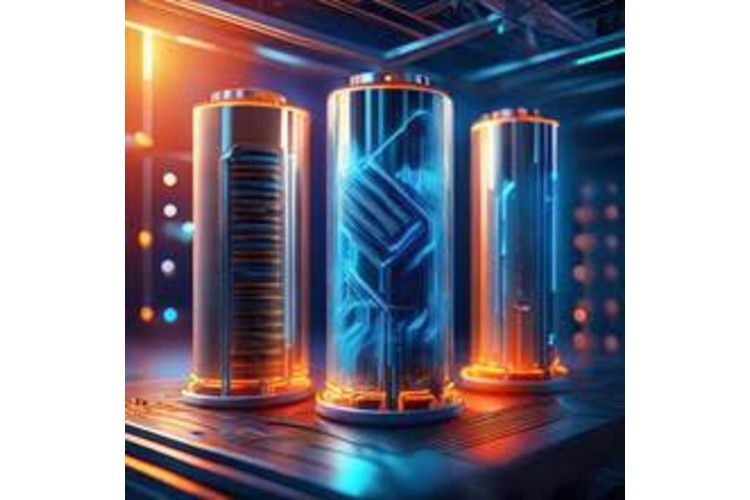In today’s world, battery technology is the backbone of electric vehicles (EVs), portable electronics, and renewable energy storage. As we seek efficient energy solutions, innovations like metal-air and lithium-ion batteries are reshaping the future. Both have their strengths and limits, but the key question is: which is better? Let’s break it down.
Understanding Metal-Air Batteries
How Metal-Air Batteries Work
Metal-air batteries derive energy from a simple process: oxidation. They consist of a metal anode (like zinc or aluminum), a porous cathode, and an electrolyte. The magic lies in the cathode, which uses oxygen from the air instead of a traditional solid or liquid. When the battery discharges, the metal reacts with oxygen to generate electricity. This unique mechanism makes metal-air batteries lightweight and highly efficient compared to conventional designs.
Advantages of Metal-Air Batteries
- Superior Energy Density: With energy densities ranging from 300-400 Wh/kg, metal-air batteries outperform many lithium-ion counterparts. This makes them ideal for weight-sensitive applications like EVs.
- Low Cost: These batteries use abundant materials such as zinc and aluminum, significantly reducing production costs.
- Enhanced Safety: Unlike lithium-ion batteries with fire risks, metal-air options are safer due to their stable chemical makeup.
- Environmentally Friendly: The use of non-toxic metals and reduced reliance on rare elements makes them a greener choice.
Challenges of Metal-Air Batteries
- Short Cycle Life: Metal-air batteries degrade faster, offering a limited number of charge/discharge cycles.
- Corrosion Issues: Air exposure often leads to corrosion in the metal electrodes, impacting performance.
- Complex Air Management: Ensuring clean and controlled oxygen flow can be technically challenging.
Exploring Lithium-Ion Batteries
How Lithium-Ion Batteries Work
Lithium-ion batteries are powered by the movement of lithium ions between a graphite anode and a cathode, often made from compounds like lithium cobalt oxide or lithium iron phosphate. The electrolyte, typically a lithium salt in an organic solvent, ensures ion transport. Their balanced efficiency and reliability make them a common choice across industries.
Strengths of Lithium-Ion Batteries
- Long Cycle Life: Lithium-ion batteries generally last thousands of cycles, making them durable and cost-effective over time.
- Proven Technology: Thanks to an established production infrastructure, they’re widely available and versatile.
- High Power Output: Reliable performance in powering vehicles, gadgets, and large-scale applications.
- Compact Design: Lithium-ion batteries are small and dense, saving space in portable devices.
Drawbacks of Lithium-Ion Batteries
- Fire Risks: Dendrites or overheating can lead to thermal runaway, causing fire or explosion risks.
- High Production Costs: Lithium scarcity and reliance on cobalt drive up costs.
- Environmental Concerns: Mining lithium and cobalt has significant ecological downsides. Recycling remains a challenge.
Key Comparisons Between Metal-Air and Lithium-Ion Batteries
Energy Density: Which Performs Better?
Metal-air batteries lead the race with an energy density of 300-400 Wh/kg, while lithium-ion batteries typically provide 250-350 Wh/kg. This higher energy density makes metal-air batteries more suitable for weight-critical applications.
Cost Considerations
Lithium-ion batteries are expensive due to the limited availability of lithium and cobalt. On the contrary, metal-air batteries rely on abundant materials like zinc and aluminum, giving them a significant edge in cost-effectiveness.
Safety and Environmental Concerns
Metal-air batteries are safer, with no thermal runaway risks. They also hold an environmental advantage by utilizing inexpensive, non-toxic materials. Lithium-ion batteries, while efficient, face criticism due to ecological impacts from manufacturing and safety risks.
Cycle Life and Longevity
Lithium-ion wins on durability, boasting a longer cycle life compared to metal-air batteries. This makes them a better fit for applications requiring frequent recharges, like electric vehicles or smartphones.
Market Outlook: Metal-Air and Lithium-Ion Battery Markets
The markets for both technologies are expanding rapidly. The metal-air battery market is projected to grow from $576.5 million in 2023 to $2.1 billion by 2034, driven by EVs and renewable storage needs. Lithium-ion batteries, valued at $21.3 billion in 2021, are expected to reach $57.9 billion by 2031, fueled by strong demand in consumer electronics and transportation.
Both technologies are crucial for energy innovation, with growth driven by government initiatives, research investments, and industry partnerships globally.
Potential Applications and Future Prospects
Applications of Metal-Air Batteries
- Electric Vehicles (EVs): Their lightweight design and high energy density make them suitable for EVs needing extended range.
- Grid Storage: Large-scale energy systems benefit from their low cost and stable safety profile.
- Portable Electronics: They are a promising solution for lighter and longer-lasting devices.
Applications of Lithium-Ion Batteries
- Consumer Electronics: Smartphones, laptops, and wearables rely heavily on lithium-ion technology.
- Aerospace: Their compact size and reliability are ideal for drones and satellite power systems.
- Electric Vehicles: Already dominant in EVs, lithium-ion’s cycle life and efficiency keep it ahead in this space.
Future Research and Breakthroughs
Metal-air battery research focuses on improving corrosion resistance and cycle life. Meanwhile, lithium-ion innovations aim to reduce reliance on cobalt and introduce new chemistries, like solid-state designs. Emerging alternatives like sodium-air or zinc-ion batteries could further disrupt the market in the coming years.
Conclusion
When comparing metal-air and lithium-ion batteries, there’s no clear winner—it all boils down to application. Metal-air batteries shine in cost, energy density, and safety, while lithium-ion leads in longevity, infrastructure, and versatility. The ideal choice depends on the specific needs of the user, with both technologies contributing to a more sustainable, energy-efficient future. As research continues to push boundaries, the possibilities for better batteries are limitless.













